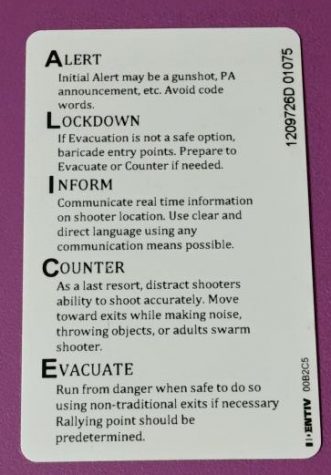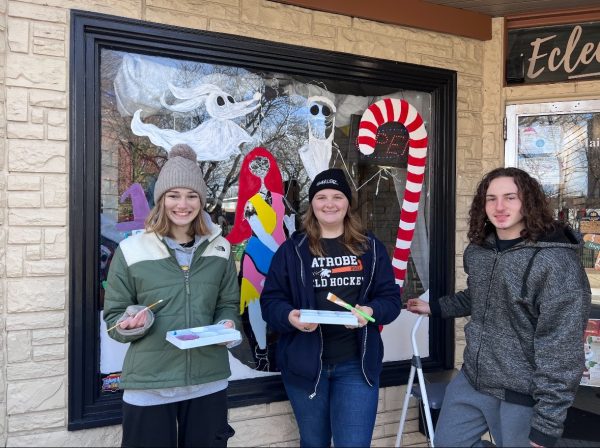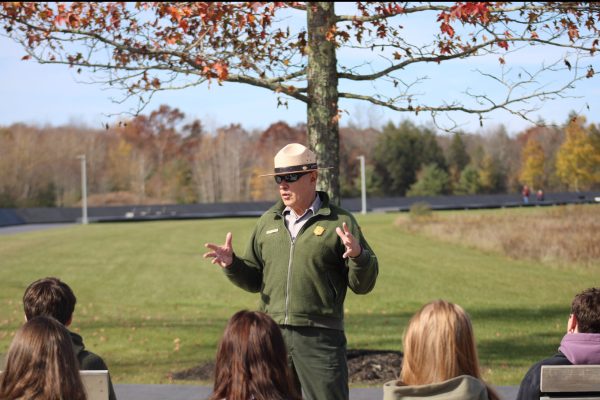ALICE Training

School shootings and violence are becoming more common in schools today. Woodland Hills is an example of just one local school that has experienced many dangerous altercation within just the last year. The rising threats are causing Woodland Hills Education Association and other school districts to take matters into their own hands by increasing security measures to better protect the students.
Throughout the fifty states, 4,200 schools have adopted the ALICE Program,which stands for Alert. Lockdown. Inform. Counter. Evacuate.
Greater Latrobe began incorporating the program into its schools the summer of 2015. Prior to this program, the school district practiced annual code red drills. During these drills, teachers were advised to lock their doors, turn off the lights, and hide their students in a corner. This was beginning to be a very passive approach, according to Mike Porembka, Director of Teaching and Learning.
On October 31, the Latrobe Senior High School had a stay in place drill for the first time. This drill was mandated by the ALICE program. During this time, teachers and students discussed options if an active shooter did enter the building. “I want it to be more of a discussion so the students can think and they can apply those concepts no matter where they are in the building,” said Porembka. Some conversations included what the class would do if they could get out, how they could barricade the door, or how they could fight back if that was their only option. Thinking ahead will also save time at the moment of an intrusion.
As Porembka reflected, during a code red students were more like sitting ducks, in his opinion, waiting for the intruder to find them. “The active shooters intent is to kill as many people as quickly as possible,” said Porembka. “ALICE provides a more active approach to the student’s survival.” The philosophy of ALICE is for students and teachers to get out of the building if it is safe. As a last resort, it also presses students and teachers to counter the intruder, or distract them, and fight back.
Police forces have also changed strategies in order to confront a school shooter faster. Police used to be instructed to surround the perimeter of a building and wait until further instructed. Following the the 2000 Columbine Colorado school shooting, one of the most infamous shootings, that process began to change. Police were then informed to enter in groups, but still proceed to wait according to officer Robert Daerr the school resource officer. “The way it is set up now,” said Daerr, “is that whoever gets there goes to the threat.”
ALICE provides trainings for not only schools, but almost all public places: businesses, healthcare facilities, etc. All teachers within the district have attended at least a four hour training with Mr.Porembka. “Usually it’s all policemen that go to those trainings,” said Daerr, “but as a school administrator he (Mr.Porembka) went to the trainings with me. He enjoys it.” One of Mr.Porembka’s maine roles is safety. “He takes it very seriously and we’re lucky to have him,” said Daerr.
At the hey training, teachers learned the theory behind ALICE, history of school shootings and how they share similarities.
Teachers also had a basic firearm awareness discussion with Officer Daerr in which the teachers were informed of common types of firearms shooters have used in the past. “The one that is seen the most is called the AR 15,” said Daerr. The AR 15 is a military assault rifle manufactured by numerous companies, and it can be purchased online. “That seems to be the most popular,” said Daerr, “because that is the easiest one to get and now it is the cheapest one.”
Within the after school flex shop, teachers experienced practical training scenarios. During this 45 minute time period, the teachers acted as students as an intruder tried to enter the room. At that time, Officer Daerr walked down the halls shooting of blanks. “The crazy part was,” says Mrs. Bobik, a third grade teacher at Baggaley Elementary, “we couldn’t tell it was gun fire. Not until he got right outside the door, practically, could we even tell it was gunfire. That was a little scary. ” Teachers then had to make on the spot decisions in order to ensure overall safety. This enabled them to put what they learned from their prior lectures into action. “When we were locked down we tried to barricade the door completely,” said Bobik, “we put all the furniture in front of the door, so if someone was coming maybe they didn’t want to waste their time.”
Although ALICE has only been implemented in GLSD for nearly two years, the district has been working for the last five years to better the safety of students. Officer Daerr is a perfect example of an upgrade the district has incorporated. “Having a school resource officer dedicated to our school district makes us safer,” said Porembka. Officer Daerr is on school property every day and is within ten minutes of any of the schools at all times.
Along with Officer Daerr, the Pennsylvania State Police surveyed all school buildings in the district to make sure everything is up to code, such as cameras, entrances, and exits. “Everything has been done that needs to be done,” said Daerr. But as threats continue to change so will safety features. Daerr said, “If something needs to be adjusted, it is adjusted.”
My name is Molly Bobik. I am a Sophomore and a first year journalist. I have been an avid swimmer and softball player since the age of seven, and...











